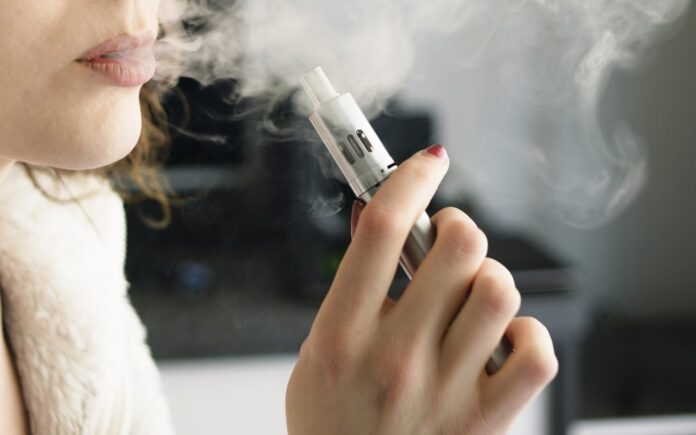Seems like smoking a good ol’ joint is a thing of the past. As the legalization of cannabis for medical and recreational use became widespread, people started to take their weed-smoking habits seriously. Once the vaporizers hit the market the cannabis smoking community changed forever.
Manufacturers are now offering all sorts of different models with different forms of heating and components, depending on whether a dried flower or a concentrate is used. Despite the various models, there are two main components in every vaporizer – heating source and delivery system. Some are more complicated than others, but they all work on the same basic principle. Vaporizing has been proven to be less damaging to the respiratory system causing many people to switch from smoking to a smokeless method of enjoying weed. Here we’ll break down on how vaporizers work and which ones are more suitable for medical purposes and which ones for leisure.
How does the vaporizing system work?
As stated, there are two main parts in every vaporizer: heating source and delivery system. Let’s tackle each one and explore differences within each one.

Heating sources
The herb can be heated in three ways: with conduction heating, convection heating, or infrared heating. They each have their advantages and flaws; it’s just a matter of personal preferences.
- Conduction heating works by delivering heat to the dried plant with the heated surface, metallic, or screen. The metallic surface is heated by an electric source of energy. However, there is a major problem of controlling the temperature of the heated surface that often results in uneven distribution of heat, thus burning the weed. Some have developed different kinds of conduction heating, like vaporsolo.com, introducing four different heat settings that minimize the risk of overheating. Even though it’s not the most reliable method of heating up the dried flowers, it’s still widely used in pen vaporizers and many other portable vapes that are number one sold vapes on the market.
- Convection heating is more even and efficient. The heated air is passed over the dried herb getting the most out of it either by inhalation and further into the delivery system or by a fan. Medical patients prefer these vaporizers since they enhance the experience while the hot air sucks out all good compounds out of the plant. Since there is no direct contact between the weed and the heating element, there is no risk of burning it. The temperature is always at the perfect level due to the ceramic material used for heating elements which spread out the warmth evenly and hold it for a long time. This type of heating system is mostly used in large desktop vaporizers.
- Infrared heating is far less used in vaporizers, but the quality is right up there with convection heating. The main source of energy is electricity or light that heats up the weed until its components start to vaporize. It’s a safe method that is yet to develop fully and become a standard heat source in vaporizers.
Delivery systems
There are also three delivery systems used in vaporizers: tubing, balloons, and direct draw. All of them have one sole purpose of delivering the fumes to the consumer. So, what are the differences?

- Tubing or whip vaporizers are used with convection heating systems that heat up cannabis with the warm air that goes through the dried plant which is located in a glass piece between the heating element and the tube. Whip or the tube is a silicone pipe that’s about 3 feet long and ends with a mouthpiece. The glass holding the herb, or the so-called “wand” has a screen that prevents any dried weed from coming into your mouth.
- Balloon vaporizers, or bag vaporizers, are similar to oven roaster bags. They are made of durable plastic and can be detached from the heating unit with a valve that will prevent the vapor loss. This is great for get-togethers, where people are usually passing the bag around. However, some people who are using it for medical purposes are claiming that the fumes are too strong and too hot. These bags can be replaced with tubes while some other types don’t have either the bag or the tube, in which case the users can only draw the vapor directly from the vaporizer.
- Direct draw vaporizers are pretty self-explanatory. The fume goes directly from the heating source to the mouthpiece. It’s commonly seen in portable vaporizers like vape pens.
Types of vaporizers available
There are three basic types of vaporizers used: pen vaporizers, portable vaporizers, and desktop vaporizers. In reality, they come in all shapes and sizes, all doing basically the same thing – heating up the marijuana. Now, let’s see the differences between these three models.

- Vape pens, or pen vaporizers, are small cigarette-like vaporizers that are convenient and not so expensive vaporizers. Simple use and their portability make them the bestsellers among the vapes. However, most of them use conduction heating systems, thus one must be very familiar with the way it operates to ensure proper temperature without burning the herb.
- Portable vaporizers are a bit bigger than vape pens and their major advantage is that they go where you go. If you want to take it to the party, or a trip, go right ahead, it’s what they’re made for. Some of them have flame as the source of heat, but the majority is powered by a rechargeable battery.
- Desktop or stationary vaporizers are just like the name says – not portable, but stationary for the home use since they need to be plugged in. On the upside, they deliver a high-quality vapor that is powered by convection heating systems. They are great for group sessions and are equipped with large balloons or bowls that grant a fulfilling experience. Click here to find out more.
How is it different from smoking?

When you light up a joint the weed burns at 2000 degrees Fahrenheit. Since the THC vaporizes at 220 degrees, and CDC at 450 degrees Fahrenheit, you can see how that’s overkill. When vaporizing the dried plant only the good stuff like THC is released in the fumes. Smoking, however, since it’s at a much higher temperature, releases hundreds of chemicals with some of them being cancerogenic which is bad news for your lungs. So, basically, smoking joint causes as much damage as smoking cigarettes. That’s why more people are shifting towards vaporizers.





